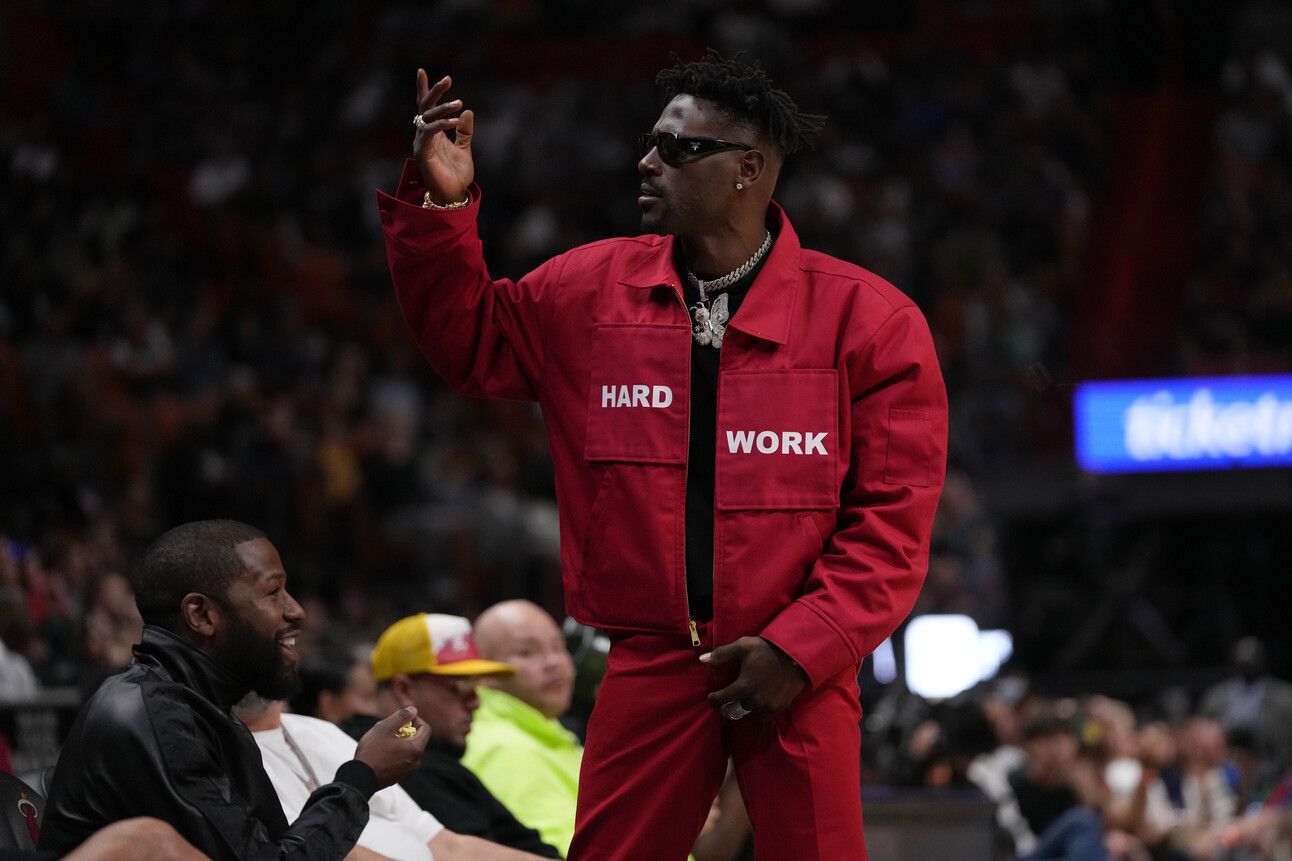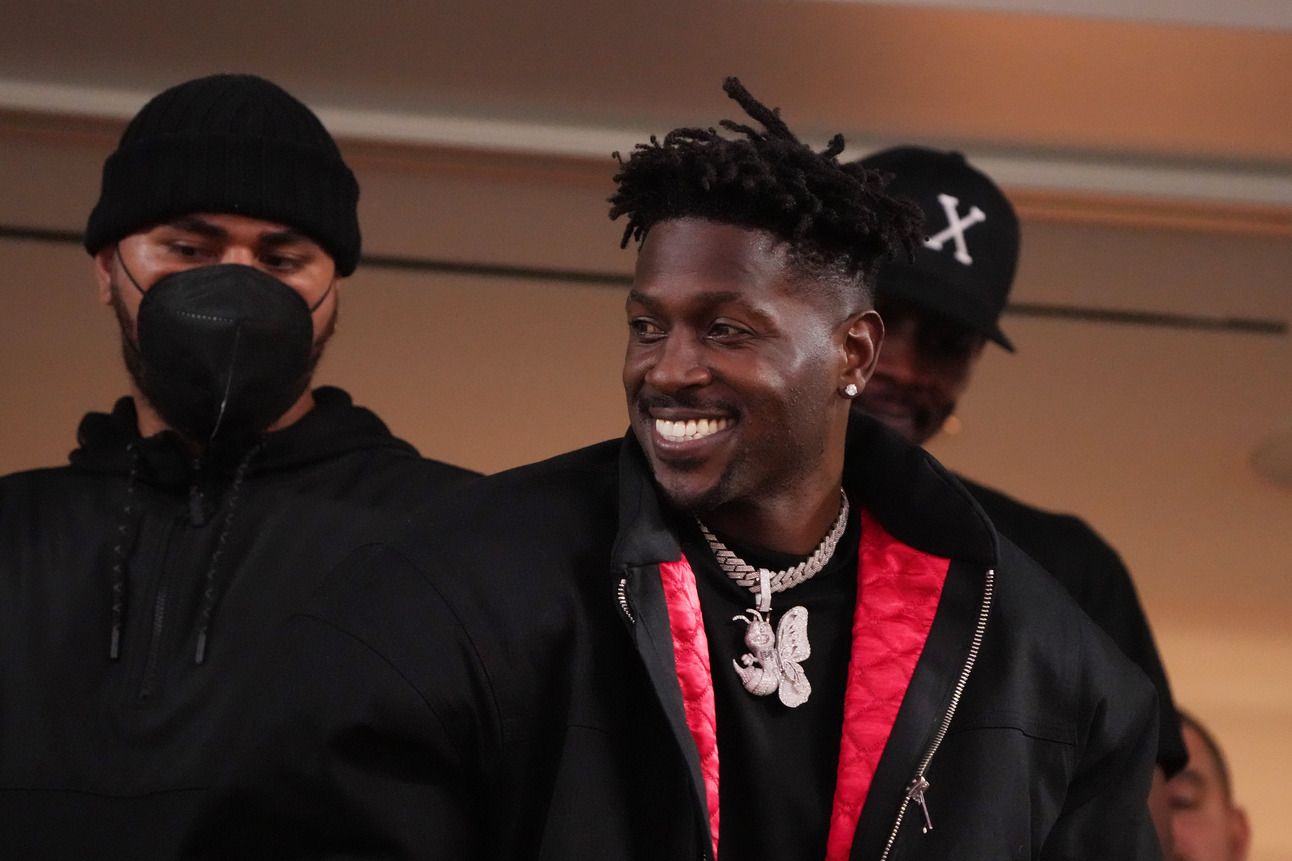- Gridiron Wallet
- Posts
- From $100M Fortune to Bankruptcy: Antonio Brown’s Blueprint of What Not to Do as an NFL Player
From $100M Fortune to Bankruptcy: Antonio Brown’s Blueprint of What Not to Do as an NFL Player

Welcome to Gridiron Wallet — where NFL players don’t just chase rings, they chase bags. From million-dollar grills to side hustles that slap, we’re decoding how football’s finest make it, spend it, and sometimes… fumble it. 🏈🔥
The latest edition of our newsletter covers Antonio Brown:
The Big Setbacks That Led to His Bankruptcy
NFT Promises and Quick Failures
Mismanaged Team Ownership

✍️Paper Play
Biggest Setbacks That Led to Antonio Brown's Bankruptcy

Antonio Brown made $88 million in career NFL earnings. When you factor in endorsement deals, the number climbs north of $100 million. That’s what a 12-year, Hall of Fame-caliber career can earn someone. But as we all know, he crashed and burned out of the league in 2021. And in the years since, Brown has seemingly been up to no good, including managing his finances.
With serious legal issues involving sexual misconduct, unpaid child support, and even an attempted murder charge, AB has gone completely off the rails. Last year, the former wide receiver filed for Chapter 11 bankruptcy, a clear sign that he had made all the wrong moves after retiring.
Brown ran into one financial setback after another following his time with the Pittsburgh Steelers. Most notably, he never cashed in on his $50 million deal with the Raiders. Due to what the team cited as misconduct during the preseason, Brown lost out on $30 million in guaranteed money. He and the NFLPA filed a grievance to recover the amount, but it never came through.
In May this year, Brown filed for bankruptcy due to mounting debts and lawsuits. A few months before that, he had opened up about how things unraveled for him during an appearance on The Nelk Boys Podcast.
“I blew all of my money. I blew everything… I just had my fun,” Brown said.
The former wideout then shared how family-related issues became a major financial setback when money started to roll in. According to him, he has no idea how much of his money ended up in other people’s hands, especially his own family’s.
“The people I had in my life, they just took the money that I made in the NFL, and they didn’t make the money mines no more,” he revealed.
At one point, Brown owned more than $10 million worth of property in Florida. But it was later revealed that none of it was insured. Judges were then allowed to hold him in contempt without proof of insurance, fining him $2,500 a day until he complied.
AB, who once was the NFL’s highest-paid wide receiver, now lives a life as a banner for news headlines, but with empty bank accounts and authorities on his tail.

💸Side Hustle Gone Wrong
NFTs That Led to Quick Failures
When Antonio Brown entered the NFT space, the timing, the execution, and the aftermath painted the real picture: It was all red flags wrapped in digital gold.
It all started in February 2022, when Brown tweeted that he had “stumbled upon” a project called BoredPunksNFT, calling it the “next big thing.” Sound familiar?
But the tweet’s original caption, which accidentally included the placeholder “Twitter Caption,” made it obvious this wasn’t a discovery, but a paid promotion.
And to make things worse, Brown followed it up with a video praising the project’s art and “community of 100 Discords,” before correcting himself: “100k Discords.”
This off-script blunder was a dead giveaway that Brown had no real understanding of the NFT he was promoting. And like clockwork, the token unsurprisingly flopped.
From a broader lens, the former Patriots WR’s timing to enter the NFT space couldn’t have been worse. Brown’s promotion arrived as the NFT market was already sliding.
After peaking at $23.7 billion in sales in 2022, the global NFT market collapsed to $8.7 billion in 2023 and stagnated at $8.8 billion in 2024. In Q1 of 2025 alone, sales reached just $1.5 billion, projecting another year of steep decline.
The crash wasn’t due to one issue. It was death by a thousand cuts. Rug pulls, like NBA player De’Aaron Fox’s $1.5M ghost project, shook trust.
Oversaturation, zero utility, and heavy correlation with crypto’s downturn, like Ethereum falling over a whopping 55% in 2025 alone, pushed retail investors out.
Even Brown’s own high-profile attempt to cash in on the hype went nowhere. His infamous MetLife Stadium exit — shirtless and mid-game during his Bucs stint — was minted as an NFT and sold for just $20,000 (or six ETH at the time). That's a far cry from the projected $1.5 million. That loss, nearly $1.48 million, symbolized the wider implosion.
So, for someone who once had $100 million in career earnings, AB’s foray into NFTs only accelerated the perception of fiscal recklessness.
Instead of a calculated entry into a bleeding-edge market, his involvement came off as a last-ditch endorsement, done hastily and executed poorly, likely in hopes of a quick buck.
Perhaps these were red flags that served as a precursor to what was in store for Brown in the future.

💡 Gridiron Wallet Trivia
Did you know?
🌿 A well-known jeweler Shuki International took Antonio Brown to court in 2022, saying Brown never paid for high-end custom pieces. The pieces included high-end watches, diamond chains and custom pieces that cost over $1.1 million.

🏈✨Lost Opportunity
Mismanaged Team Ownership

Antonio Brown left the league in the most ignominious manner possible: Shirtless and in the middle of a play during an NFL game. In hindsight, that moment now feels like a foreshadowing of his chaotic post-NFL life.
One of his biggest flubs was his foray into sports team ownership. In March 2023, Brown bought a 47.5% ownership stake of the Albany Empire, a successful team in the nascent National Arena League.
The Empire were a revival of the Arena Football League team of the same name that had won the final AFL championship in 2019 before that league folded. They also claimed NAL titles in 2021 and 2022. But when AB and CTESPN entered the scene, everything went into the bin.
Right away, Brown claimed he owned 100 percent of the team. He didn’t. A local businessman, Mike Kwarta, held an identical 47.5 percent stake. But in the first of a string of strange occurrences, Kwarta sold his entire stake to AB for just one dollar about a month later. Suspicious? Indeed.
Brown then brought in his father, Eddie Brown, a former Albany Firebirds legend from the 1990s, to run the team as vice president of football operations. The pair’s presence soon caused the departures of most of the team’s previous regime.
The season was a mess. The team that had won back-to-back championships started off with a win in Week 1, but lost their next six straight games. At that point, they had already employed four different head coaches during that one season. And even worse, it was announced that the NAL would be expelling the Empire for failing to pay league and overdue assessments.
The transition from the previous front office to Brown’s people also caused several kerfuffles, firings, and re-hirings. They didn’t even have access to their payroll system for a week at one point. Many employees, including players and coaches, were not getting paid when they were supposed to. It was, as Lemony Snicket would say, a series of unfortunate events.
Just months after coming on board as a part owner, Brown had tanked the Albany Empire completely, and the team folded. A later development suggested Brown’s mismanagement and toxic presence were to blame for the tailspin.
Kwarta and others announced in the fall of 2023 that they would be bringing the Albany Firebirds back from the dead with the new AFL, which was revived in 2025 as Arena Football One. They even brought back Damon Ware, one of the head coaches Brown and company had fired, for the final AFL season in 2024.
AB has shown exactly what not to do when you come on as a part-owner of a sports franchise. Meanwhile, many other former athletes, most notably Tom Brady and Magic Johnson, have found great success as minority owners, contributing in more subtle ways. Too bad Antonio Brown has probably never even heard of the word “subtle”.

📆 NFL Money Stat of 1994
The entire NFL salary cap in 1994—the first year it was introduced—was just $34.6 million per team.
That’s less than what many QBs make in a year today.
For context, Troy Aikman was the highest-paid NFL player that year and he was making around $4 million annually.
